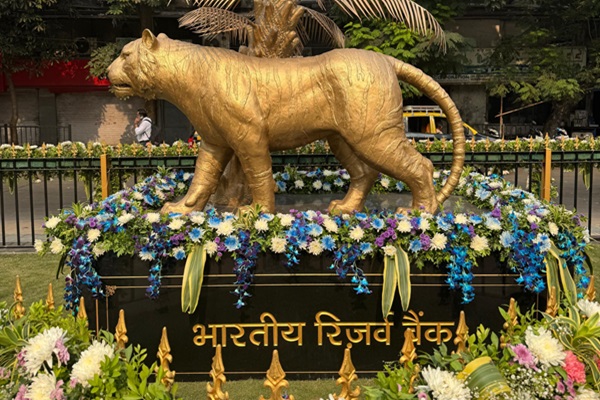.png)

Dr. Srinath Sridharan is a Corporate Advisor & Independent Director on Corporate Boards. He is the author of ‘Family and Dhanda’.
July 1, 2025 at 9:10 AM IST
In a recent newsletter, M. Damodaran, former Chairman of the Securities and Exchange Board of India, raises several thoughtful and compelling questions about the evolving role of the Reserve Bank of India in bank boardrooms. His reflections on the importance of board autonomy, the nature of board discussions, and the risk of regulatory overreach deserve careful attention.
Damodaran’s experience and reputation lend weight to his analysis, marked by clarity and candour. His critique, however, places disproportionate emphasis on the RBI’s approach to supervision while offering less scrutiny of the persistent weaknesses in board governance that have necessitated stronger oversight.
Damodaran’s arguments risk portraying RBI’s supervisory actions as intrusive or mistrustful without adequately confronting the underlying problem: that in too many instances, bank boards have not functioned as vigilant stewards of institutional health but as instruments of patronage or inertia.
What did Damodaran say?
A pointed and critical assessment of the RBI’s proposed move to intensify its oversight of bank boardroom proceedings, viewing it as an expression of institutional distrust rather than strategic necessity. He questions whether the deployment of Senior Supervisory Managers, or SSMs, to examine board agendas, participation levels, sub-committee functioning, and even dissent dynamics reflects an overreach that could compromise board autonomy and decision-making integrity. He warns that such interventions may reduce board deliberations to a box-ticking exercise, undervalue silent but thoughtful directors, and nudge boards toward artificial dissent. The commentary also highlights the inconsistency between RBI’s earlier efforts to reduce routine regulatory clutter in board agendas and its current shift toward more granular scrutiny.
Beyond procedural critique, he raises deeper concerns about regulatory proportionality, conceptual clarity on board-versus-management roles, and the operational readiness of RBI’s supervisory cadre. Damodaran underscores the irony of imposing behavioural expectations on directors through SSMs who may lack direct boardroom or commercial banking experience. He advocates for better board composition, more trust in directors, and a return to the RBI’s own 2015 framework, which had encouraged bank boards to self-govern with a greater sense of ownership, responsibility, and strategic focus.
Silent Boards
That the boards are naturally capable of policing themselves presumes a level of independence, rigour, and dissent that is often not reflected in practice. In far too many institutions, the board is not a site of searching scrutiny but a carefully choreographed forum, where consensus is assumed and challenges are muted. The culture of independence, so essential to corporate stewardship, has often yielded to collegiality, compliance, or mere ceremonial participation.
It would be disingenuous to ignore the reality that much of India’s board architecture remains clubbish and curated. Boards of listed entities often reflect continuity rather than accountability. Many independent directors are frequently beholden to those who appoint them. Rarely is dissent visible, and rarer still is the resignation of a director on principle. The quietest voices are not always the wisest, and the noisiest are not necessarily the most vigilant. The RBI is simply asking: are boards doing their duty or performing a script?
More searching questions must also be asked. How many directors are truly independent? Why are board evaluations always favourable? Why are public resignations on grounds of principle almost non-existent? What explains the reluctance of seasoned directors to speak up, even as governance failures unfold in real time? Why do some directors sit on a dozen boards, stretching themselves thin, yet rarely facing scrutiny for absenteeism or superficial engagement? Do board members even know the second-line leadership across key functions in the organisations they oversee? And yet, nomination and remuneration committees routinely certify that talent pipelines have been reviewed and succession plans are in place. This gap between claimed oversight and actual familiarity with the organisation’s human depth is telling and troubling.
Guardianship Vs Micromanagement
The RBI’s move must be seen in this context. Its regulations and supervisory rigour are not whims born of suspicion. It is an institutional response to persistent governance opacity, often bordering on dysfunction.
Every crisis, or the emergence of new risks, or the sheer severity of risks previously underestimated, forces the RBI to a moment of reckoning. And each time, it learns, adapts, and upgrades its regulatory posture. Its decision to examine board agendas, participation, and subcommittee effectiveness is not an act of overreach but a necessary act of guardianship. Especially in the financial sector, where systemic risk is real and contagion rapid, regulators must act not after the crisis, but before the rot.
Those who argue that central bank supervision of boards is unusual would do well to study global practice.
The Bank of England, the European Central Bank, and other major regulators have steadily expanded their purview over governance standards since the 2008 global financial crisis. In fact, the ECB’s Single Supervisory Mechanism explicitly assesses board effectiveness, risk culture, and the quality of oversight. If anything, the RBI has been far more cautious than its international peers.
Moreover, banking is a fiduciary institution built on public trust. Depositors do not have the tools to evaluate board conduct or balance sheet risks. By the time fraud, mismanagement, or regulatory breaches come to light, confidence has already begun to unravel. Supervision, then, becomes a civic responsibility. The RBI’s presence has to be seen as reinforcement of trust in an ecosystem where private accountability mechanisms are developing, and is not evenly rigorous across its regulated entities.
Capability and Structure
It is also worth addressing directly the concern that the RBI’s Senior Supervisory Managers may not, by virtue of rank, possess sufficient gravitas to interact meaningfully with bank boards. This argument, while intuitively appealing, misses how regulatory systems function worldwide. In most mature regulatory architectures, including those of the Bank of England, the European Central Bank, and even India’s own securities regulator SEBI, regulatory supervision is routinely conducted by officers of equivalent rank and designation. What is critically missed in the argument is that the supervisory function roll up all the way from CGM to executive director and onto a deputy governor in the RBI. But then, if the REs or their lobbies expect the governor or the deputy governor to respond to their queries on annual supervision, then they have not understood the regulatory process.
In the RBI’s case, the supervisory officers are not only professionally trained, but are also supported by one of the most robust supervisory ecosystems in India. The RBI is the only regulator in the country with a dedicated College of Supervisors, tasked with continuously enhancing the analytical, institutional, and on-ground rigour of its supervisory cadre. To imply that effective oversight depends solely on official hierarchy is to overlook the depth of institutional training that enables it. A lesson for all other regulators in India.
The structural complexity of India’s banking laws further necessitates a more nuanced appreciation of the RBI’s task. At present, three distinct legal frameworks govern Indian banking—the Banking Regulation Act for private sector banks, the SBI Act for the State Bank of India, and the Nationalisation Acts for public sector banks. This fragmented architecture creates glaring asymmetries. Private sector banks are, in theory, subject to tighter governance rules under the Companies Act. Public sector banks, however, are not. The government, as majority shareholder, appoints directors and influences decisions, thereby placing the RBI in a delicate position—expected to regulate, yet unable to override its own sovereign shareholder.
This legal fragmentation dilutes the RBI’s supervisory latitude. It cannot reprimand a government-nominated director, let alone a bureaucrat sitting on a public bank board without, in effect, challenging the authority of the sovereign itself. Until the day comes when all banks are governed under a single statute and subjected uniformly to the Companies Act, the RBI’s role as a supervisory institution must be bolstered, not second-guessed. Such unification will require political will of the highest order—a national recognition that governance cannot be tiered.
Boards and Practicality
At the same time, one must acknowledge that boards are not meant to be executive bodies, nor should they be expected to operate with granular, day-to-day immersion. Directors must necessarily rely on the accuracy, completeness, and framing of information presented by management. Time, too, is a constraining variable—board meetings are typically compressed affairs, and with modest sitting fees and mounting compliance burdens, there is often little incentive for deeper engagement unless regulatory or reputational pressure compels it.
In such a context, it may be worthwhile to consider a shift in the mechanics of oversight itself. Rather than relying solely on minutes, often stylised or sanitized, a more neutral, contemporaneous record of proceedings could be maintained, confidentially with the RBI. With commercially available AI tools, the transcription and analysis of boardroom discussions can become a valuable supervisory asset, enabling regulators to assess not only what was said, but the depth, relevance, and significance of individual director contributions to matters of institutional consequence.
Governance reform in India cannot be left to good faith alone. It must be institutionalised, tested, and constantly supervised. In the absence of robust enforcement, governance codes become aspirational documents, cited more than followed. The RBI’s actions signal an awareness of this reality. It is not seeking to supplant boards. It is seeking to remind them that oversight is not a privilege. It is a duty.
There is, of course, space for refinement. The modalities of supervision must be proportionate, and must distinguish between formal participation and substantive engagement. The RBI must ensure that its scrutiny does not encourage verbosity over wisdom, or dissent for its own sake. But the principle behind its intervention is unimpeachable. It is acting from institutional memory.
The RBI’s move, if anything, reflects an act of institutional courage. To claim otherwise is to romanticise a boardroom ideal that exists, in far too many Indian institutions, more in theory than in practice.




